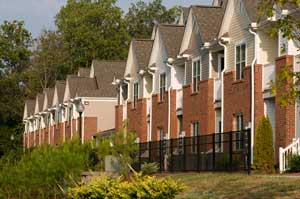Is a Bubble Brewing in the Multifamily Housing Market?

Out of all major commercial real estate categories, the multifamily market has strengthened the most since the last recession. Is a bubble brewing? And how does the Eighth Federal Reserve District1 compare with the nation? An article in The Regional Economist explored these questions.
Regional Economist Charles Gascon and Senior Research Associate Joseph McGillicuddy noted that multifamily rents have been growing about 3 to 4 percent per year since 2012, much faster than general prices. They also noted that this growth seems to be fueled by both an increase in demand and a decrease in supply.
More Demand for Multifamily Housing
The authors noted that demand for renting increased in the wake of the most recent recession due to foreclosures, poorer job prospects and tighter mortgage lending standards. Other factors include younger households waiting longer to buy houses and baby boomers being more willing to rent as they get older.
Less Supply for Multifamily Housing
Gascon and McGillicuddy also pointed out that construction activity fell during the recession, due both to builders closing up shop and to lenders extending less credit. “So, as demand began to experience significant growth, there was a severe fall in new units entering the market, leading to a large gap between demand and supply,” they wrote.
Bubble in the Market?
The authors noted that strong growth in property prices and lending activity may be warning signs of a bubble in the multifamily housing market. However, they also noted that demand growth may slow to a more sustainable level once the homeownership rate stabilizes.
Although it may slow down, demand shouldn’t experience a sharp drop, as Gascon and McGillicuddy showed that other demand drivers remain strong:
- The number of adults aged 18-34 is projected to rise, and data suggest that more people from this group are moving out of their parents’ homes.
- The American population continues to age, with baby boomers downsizing.
“Such a slight slowdown in demand growth should allow supply to adjust to the change smoothly,” they wrote.
Multifamily Housing in the Eighth District
In the Eighth District, rent has grown about 2 to 3 percent per year since 2012, slightly less than for the nation as a whole.
Among the District’s four largest metropolitan statistical areas (MSAs), St. Louis and Louisville, Ky., saw their vacancy rates stabilize between 4 and 5 percent, while Memphis, Tenn., and Little Rock, Ark., have rates at about 7 percent. Gascon and McGillicuddy noted that Little Rock had quite a few new units constructed between 2012 and 2014, “causing the vacancy rate to increase by more than 2 percentage points during that time period.”
As far as construction goes, the authors said apartment completions in the Eighth District are at the levels seen before the recession, but haven’t seen growth beyond that. Nationally, completions are well beyond their mid-2000s average.
Overbuilding in the District?
Gascon and McGillicuddy concluded by noting that multifamily building permits have started to exceed their pre-recession averages in the four largest District MSAs, with much of the new investment seemingly coming from outside the region. “If these outside investors do not have a solid understanding of the more modest drivers of growth in local markets, there is a risk that some of these new projects may be excessive.”
Notes and References
1 Headquartered in St. Louis, the Eighth Federal Reserve District includes all of Arkansas and parts of Illinois, Indiana, Kentucky, Mississippi, Missouri and Tennessee.
Additional Resources
- Regional Economist: Multifamily Housing Shows Strong Growth, Leading to Bubble Fears
- On the Economy: U.S. Consumer Debt Rises Overall, Housing Debt Drops
- On the Economy: The Generational Influence on the Homeownership Rate
Citation
ldquoIs a Bubble Brewing in the Multifamily Housing Market?,rdquo St. Louis Fed On the Economy, May 29, 2017.
This blog offers commentary, analysis and data from our economists and experts. Views expressed are not necessarily those of the St. Louis Fed or Federal Reserve System.
Email Us
All other blog-related questions

